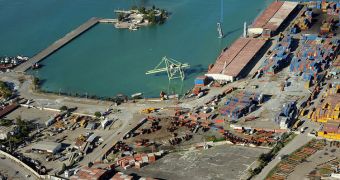As international relief efforts are underway in the severely affected Caribbean nation of Haiti, researchers in the United States are beginning to wonder whether the nation's cities are safe from such a potentially devastating natural disaster. Numerous cities in the US lie on, or very close to, intensely active areas, such as fault lines and subduction zones. Naturally, the metropolises most at risk are those on the West Coast, Los Angeles and San Francisco included. But geologists say that urban sprawls in the Pacific Northwest, the Midwest, and even on the East Coast may be at risk, LiveScience reports.
“The very largest earthquakes all occur on subduction zones. These are also the faults that make very large tsunamis that propagate across ocean basins to cause a lot of damage,” Lamont-Doherty Earth Observatory seismologist Geoffrey Abers, who is an expert based at the Columbia University in New York (CUNY), explains. The Cascadia subduction zone is one of the most dangerous such formations. Stretching from the northern parts of Vancouver Island, in Canada, all the way to northern California, it is responsible for phenomena such as accretion, subduction, deep earthquakes, and active volcanism. It is located at the boundaries of the Juan de Fuca and the North America plates, and the disturbances it can produce have the ability to affect major cities such as Vancouver, Seattle, Portland, and Victoria.
However, when it comes to tremor damage-prevention plans, the US fare a lot better than Haiti did. “Compared to Haiti, probably the most important difference between the US are the building codes and building designs. The level of strong ground shaking we saw in Port-au-Prince was largely devastating because of the unreinforced masonry there and the shantytowns on unreinforced slopes. In the US, we'd always see some damage, but we'd expect to see less loss of life because the building codes are strong in California and somewhat strong in the Pacific Northwest,” Abers reveals.
“The ground in the East also propagates shaking much more efficiently, so earthquakes would affect a much bigger area. In the west, the crust is much more busted up, so the seismic waves attenuate – the magnitude 6.7 Northridge earthquake felt in Southern California but not Northern California. In the east the ground has hardened for millions and millions of years, so I felt shaking in Boston from a magnitude 6.0 earthquake in central Quebec that was 500 miles from where I was sitting,” the expert concludes.

 14 DAY TRIAL //
14 DAY TRIAL //